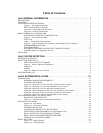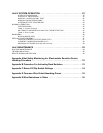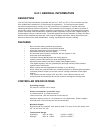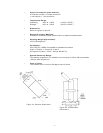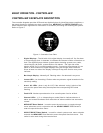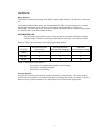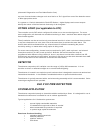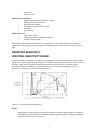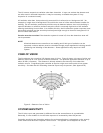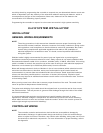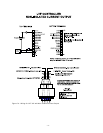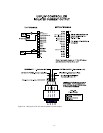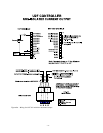- 7 -
(Automatic Diagnostics and Fault Identification Cont)
any one of several status changes such as a fault or a "fire" signal from one of the detection areas
to take appropriate action.
If a system or vi fault is detected the Fault LED flashes, digital displays and current outputs
identify the nature of the fault and the fault relay is de-energized.
VOTING LOGIC (not applicable to U1F)
The controller can be DIP switch configured for either one or two monitoring areas. For a one
area configuration, all channels are considered as being in Area 1 and both Area alarm relays will
be activated together.
The dip switches can be set so that only one channel need be in alarm to activate the area alarm
or any two channels must ‘vote’ (see a fire at the same time) to activate the area alarm. The
instant alarm will be activated when any channel sees UV radiation exceeding the preset
sensitivity setting, no matter what voting option is being used.
For a two area configuration, channel one (one and two for U4F) make up Area 1 and channel
three (three and four for U4F) make up Area 2. With the U4F each Area alarm may be
programmed with different voting criteria (ie. Area 1 may be set so that either channel one OR
channel two may activate the area alarm, and Area 2 may be set so that both channels three AND
four must see the fire at the same time to activate the Area alarm).
DETECTOR
The detector responds to UV radiation over the range of 185 to 260 nanometers. It is not
sensitive to direct or reflected sunlight nor to normal artificial lighting.
The detector is housed in an explosion-proof enclosure that is designed to meet most national and
international standards. It is available in anodized aluminum or optional stainless steel.
The detector is typically mounted with a swivel mounting assembly which is recommended. Other
mounting arrangements are possible.
Unit II UV FIRE DETECTION
SYSTEM APPLICATION
The detector responds instantly to ultraviolet radiation emitted by a flame. It is designed for use in
hazardous locations and is suitable for use in outdoor applications.
Typical applications for UV detection systems are:
< around highly combustible materials
< if instantaneous response to flame is needed
< where automated fire protection is required
< to protect large capital investments
Petroleum Products Handling
< petroleum loading terminals
< offshore platforms
< pipeline stations
< tank farms



